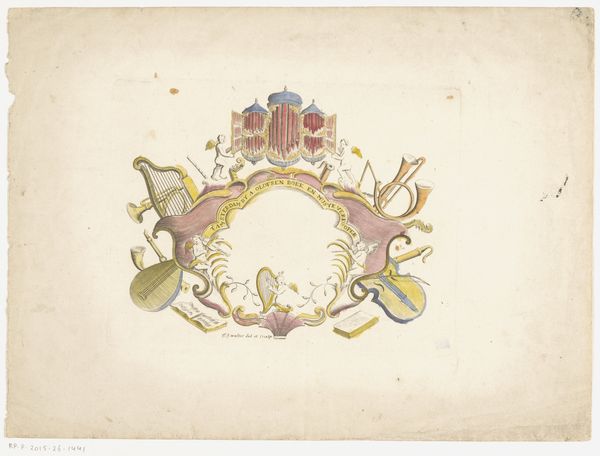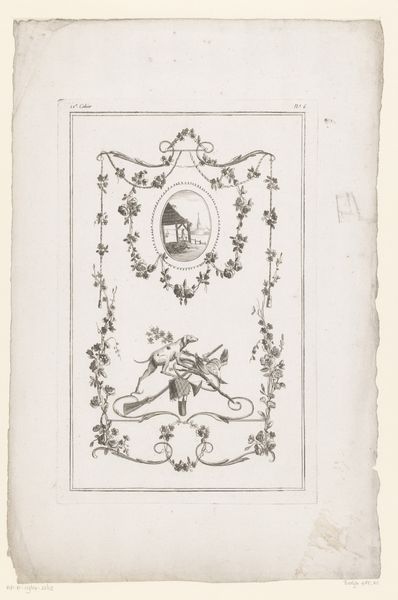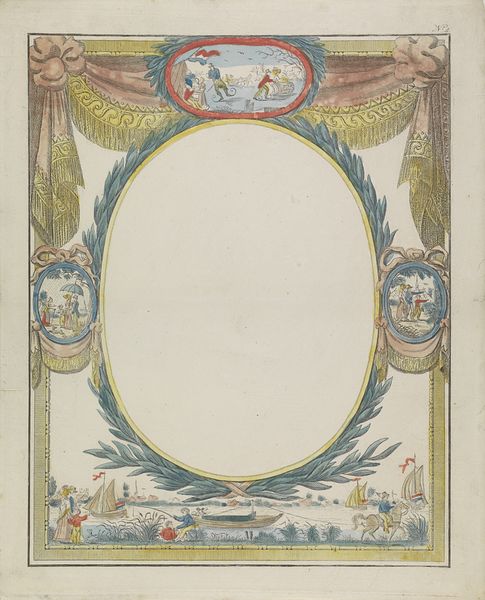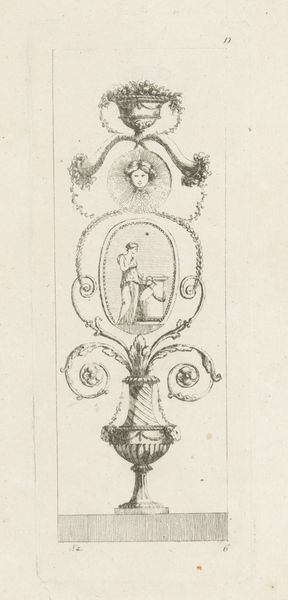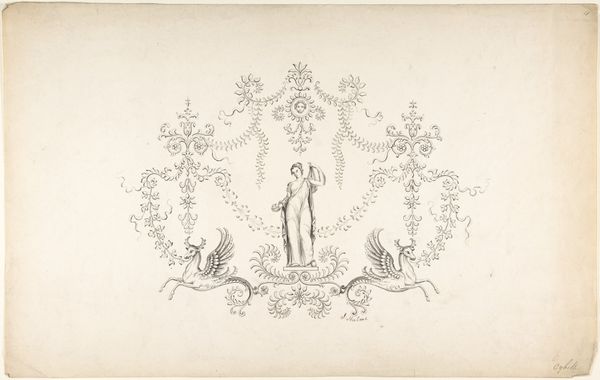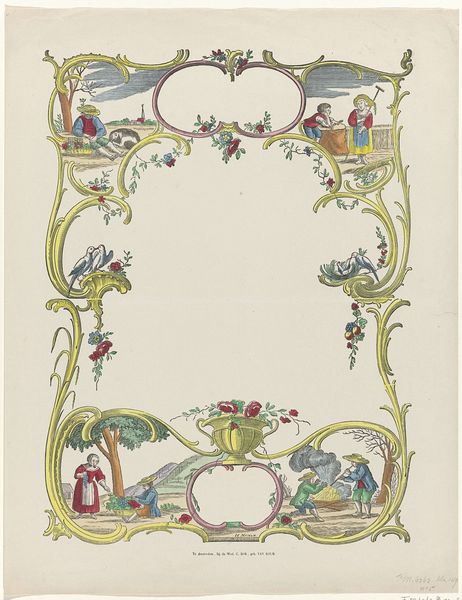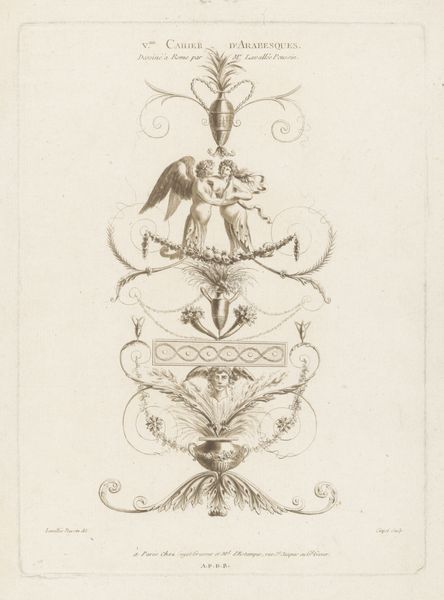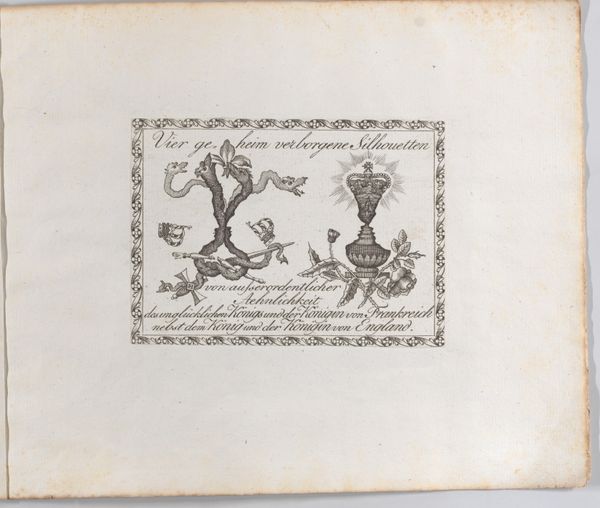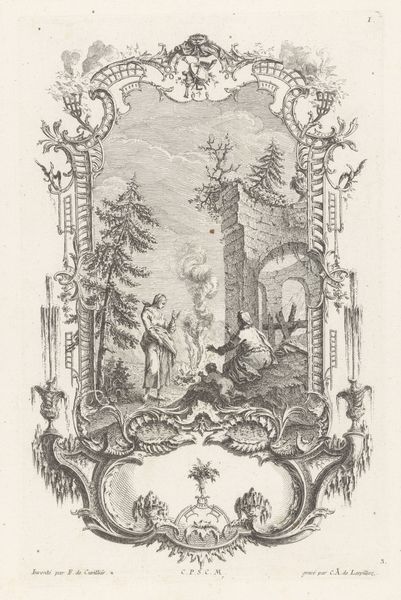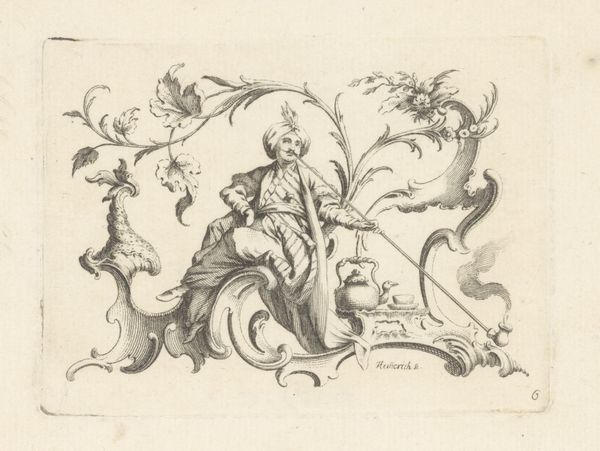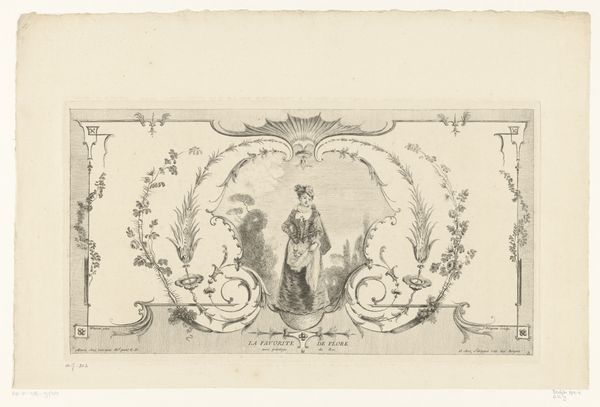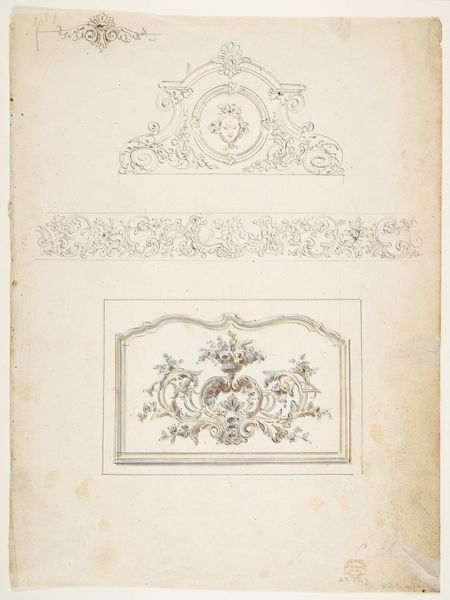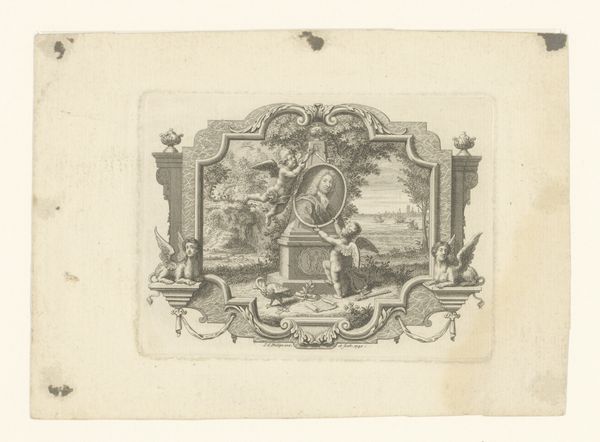
drawing, ornament, print, watercolor
#
drawing
#
ornament
#
allegory
# print
#
landscape
#
figuration
#
watercolor
#
romanticism
#
horse
#
watercolour illustration
#
decorative-art
Dimensions: sheet: 9 1/2 x 14 3/4 in. (24.2 x 37.4 cm)
Copyright: Public Domain
Curator: This watercolor illustration, titled “Design for Panel Decoration,” comes to us from J. Hulme, created sometime between 1828 and 1840. It offers a fascinating glimpse into decorative arts of the Romantic period. Editor: It has an airy, almost dreamlike quality to it, doesn't it? The soft watercolor washes and delicate line work really give the figures a sense of ethereality. And it has the look and feel of something mass-produced. Curator: Observe the allegorical figure at the center, likely a representation of Aurora, the Roman goddess of dawn, or possibly even Victoria given the time of production, driving a chariot pulled by two horses, framed within a complex ornamental border. Note the strategic balance of the composition. Editor: Right. The symmetrical composition is interesting – especially given Hulme's choices regarding media. Watercolors allowed for a fluidity of execution, which lends itself particularly well to ornamental prints because it reproduces nicely via mass production techniques like lithography. It makes you wonder, who was consuming these kinds of images and for what purpose? Curator: Absolutely. There is also the question of its relationship to architectural space. This design for panel decoration, invites us to consider the principles of repetition and symmetry typical of formalist approaches to wall adornment during that era. And consider the very conscious deployment of color. The composition features the contrast between muted pastel tones and the warm color of the horse bodies. Editor: The artist's choices concerning the figure’s garb and the horses too… they could say quite a bit. For instance, those details likely reflect broader trends in fashionable design. It encourages me to dig deeper and understand this piece in terms of craft practice in general at the time. Who made the paper, ground the pigments, printed the design, and how were those skills transmitted and compensated. Curator: Certainly, such analysis adds valuable perspective to this study in form. But the interplay of line, color, and allegorical figure gives it its conceptual weight. Editor: Perhaps, and perhaps we should never forget art doesn’t come from thin air and requires work. I feel drawn to investigating that work! Curator: Agreed. Ultimately, “Design for Panel Decoration” functions both as a testament to idealized aesthetics and a blueprint for everyday environments. Editor: Right, for the factories churning them out and, potentially, those buying them. Makes me want to know more about this process.
Comments
No comments
Be the first to comment and join the conversation on the ultimate creative platform.
